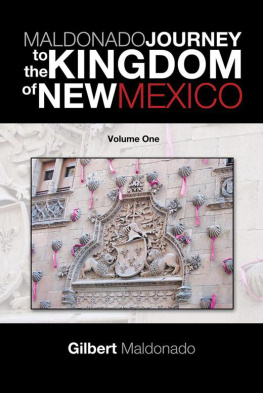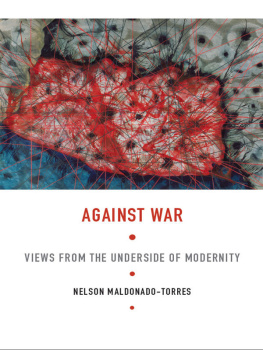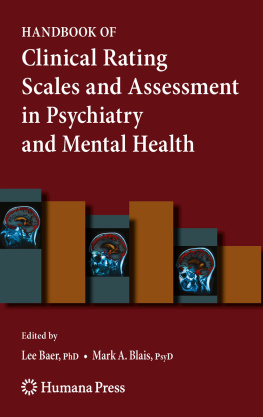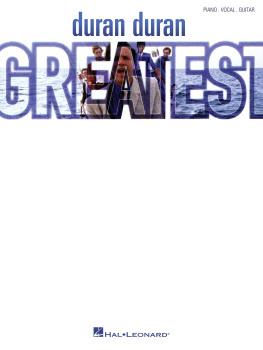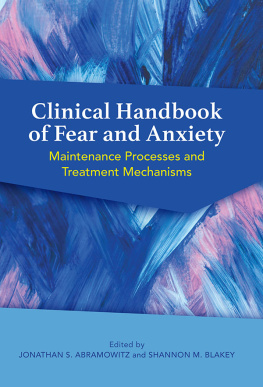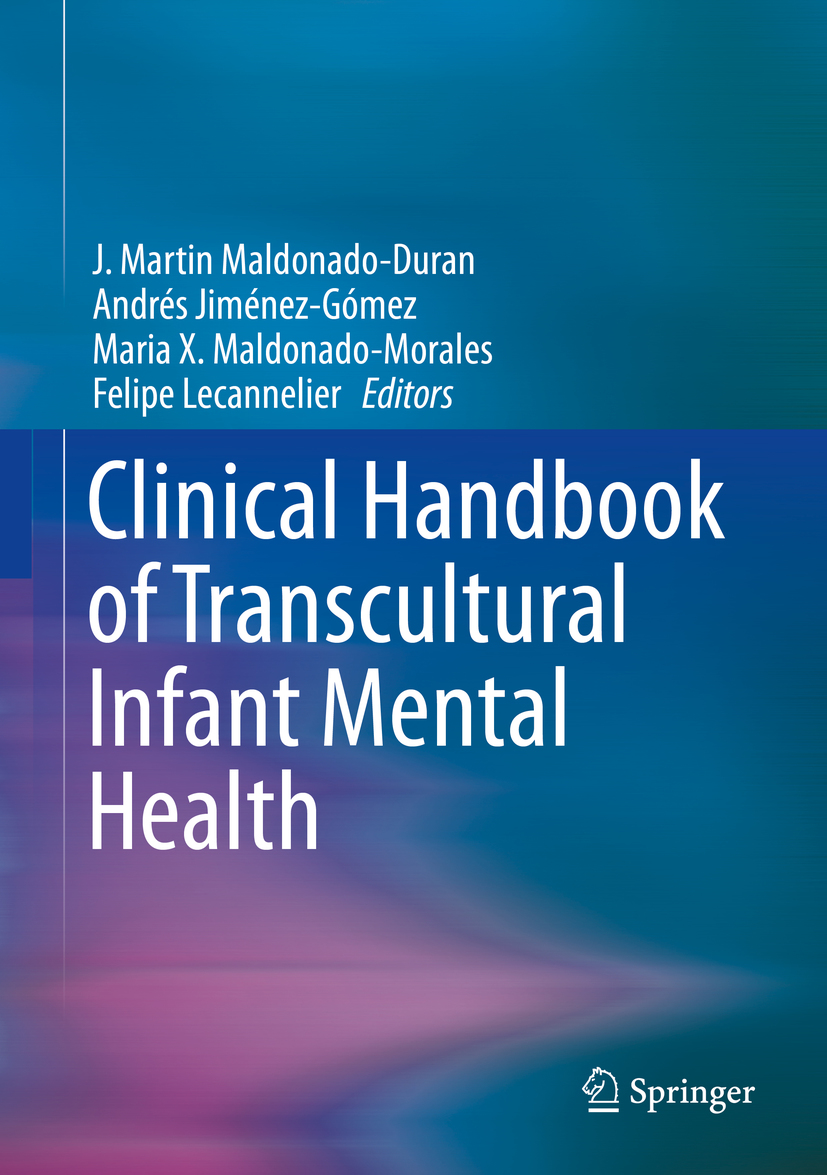Editors
J. Martin Maldonado-Duran
Menninger Department of Psychiatry, Baylor College of Medicine, Houston, TX, USA
Andrs Jimnez-Gmez
Department of Pediatric Neurology, Joe DiMaggio Childrens Hospital, Hollywood, FL, USA
Maria X. Maldonado-Morales
Trauma and Grief Center, Texas Childrens Hospital, Houston, TX, USA
Felipe Lecannelier
Facultad de Ciencias Medicas, Universidad de Santiago de Chile, Santiago, Chile
ISBN 978-3-030-23439-3 e-ISBN 978-3-030-23440-9
https://doi.org/10.1007/978-3-030-23440-9
Springer Nature Switzerland AG 2019
This work is subject to copyright. All rights are reserved by the Publisher, whether the whole or part of the material is concerned, specifically the rights of translation, reprinting, reuse of illustrations, recitation, broadcasting, reproduction on microfilms or in any other physical way, and transmission or information storage and retrieval, electronic adaptation, computer software, or by similar or dissimilar methodology now known or hereafter developed.
The use of general descriptive names, registered names, trademarks, service marks, etc. in this publication does not imply, even in the absence of a specific statement, that such names are exempt from the relevant protective laws and regulations and therefore free for general use.
The publisher, the authors, and the editors are safe to assume that the advice and information in this book are believed to be true and accurate at the date of publication. Neither the publisher nor the authors or the editors give a warranty, express or implied, with respect to the material contained herein or for any errors or omissions that may have been made. The publisher remains neutral with regard to jurisdictional claims in published maps and institutional affiliations.
This Springer imprint is published by the registered company Springer Nature Switzerland AG
The registered company address is: Gewerbestrasse 11, 6330 Cham, Switzerland
Foreword
A defining feature of todays world is the trend toward increasing globalization and the reactionsboth accepting and rejectingbrought about by such tendency toward cultural homogenization and intensified economic and social relations between nations. The power of technology, such as a global social media giving immediate access to most people in the world to events and ideas occurring anywhere else in the planet, joins forces with the greater contact between people brought about by travel and commerce across international boundaries.
In the industrialized countries, in particular, immigrationboth legal and illegaland a surge of refugees escaping poverty and violence have intensified the pressure to create communities where different cultures, customs, religions, dresses, cuisines, and ethnicities can coexist in harmony. A counterreaction to such multiculturalism appears to be sweeping industrialized countries, where many members of the local, dominant culture and ethnicity feel threatened by the potential loss of their culture and social or ethnic identity spawning, in turn, a resurgence of nationalism and xenophobia, fear and hostility of the other, and suspicion of those in their own culture who have betrayed it by aligning themselves with the other and welcome multiculturalism and globalization and accept and even appreciate diversity.
This dialectical process between globalization and multiculturalism, on the one hand, and ethnocentricity, nationalism, and rejection of diversity, on the other hand, is likely to shape this signal struggle of the new century. It is a process that provides a context that heightens this books pertinence and relevance.
This impressive compilation of chapters ranges from the earliest phases of human developmentthe perinatal phase and early childhoodto efforts to illuminate how the contact with the other, while capable of generating defensiveness and prejudice, can also promote a deeper understanding of ourselves. This is not a collection that highlights the quaint and esoteric practices of others as much as an exploration of the universality of human needs, aspirations, and hopes that all families harbor for their children, as embodiment of the future, and as these universal themes are differently expressed in particular cultures.
Both the editors and the authors are first and foremost practical, committed clinicians, who combine clinical knowledge and wisdom with sensitivity and compassion. Offering glimpses of how these clinicians approach and work with patients and families of diverse background makes this book particularly useful and relevant for all disciplines involved in providing social services, health and mental health services, and early childhood interventions to children and families. It does so by embodying a mentalizing perspective, a view that seeks to see the other from the inside and oneself from the outside and thus not only affords a meaningful understanding of the others point of view but also promotes a timely questioning of ideas and practices all too often taken for granted.
This books first section examines how culture becomes embedded and embodied in childrens bodies and minds as the early attachment relationships provide a context that signals to children to trust, internalize, and believe in the universality, applicability, and validity of ways of thinking, speaking, feeling, preferring, acting, and interacting, transmitting from one generation to the next parents values, attitudes, expectations, and prejudices. In so doing, this section offers an invitation to all readers to examine their own unavoidable biases, both conscious and unconscious, regarding others and our judgments of what is good, normal, healthy, or desirable.
This books second section reviews how clinicians deeply knowledgeable about children and families of various backgrounds connect and work effectively with them. Particularly useful is the careful balance each of these chapters achieves between, on the one hand, highlighting common themes in families from a particular background, such as Latino or Native American, and, on the other hand, emphasizing the enormous diversity within these groups and the necessity to ultimately appreciate the uniqueness of each child and family. One of the chapters examines, from an outsider perspective, the views and particularities of EuropeanAmerican children and families.
The chapter on Asian children and families heavily focuses on Japanese families, illustrating issues of interdependency and the impact of a strong cultural emphasis on accommodating to the group, as in the common refrain that the nail that sticks out gets hammered. The chapter focusing on Latino families emphasizes the vicissitudes and challenges faced by migrants, particularly undocumented ones, seeking to find a safer, better life in the United States for them and their children.



